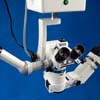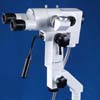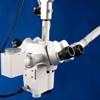Laser Eye Surgery
Eye surgery or ocular surgery is any surgery performed on the eye or the parts surrounding it. While eye surgery is also done to remove cataract and manage glaucoma, the most popular operations today like LASIK and LASEK are done mostly to correct vision disorders like myopia, hyperopia and astigmatism and minimize or remove entirely the need for a person to wear corrective lenses. A surgery performed on the eye to correct the refraction of light in the cornea is called refractive surgery and are usually done with an ophthalmic instrument called an excimer laser that will correct the corresponding curvature of the cornea. Excimer lasers have been approved for use in operating in the eyes in 1995, although there are still very few practicing ophthalmologists who specialize in the use of lasers in ocular surgery.There are several ways that an ophthalmologist can do to correct abnormalities in the shape of the cornea. One of these involves cutting a thin flap of the tissue of the cornea using a microkeratome. This is because the epithelium or outer layer of the cornea regenerates so quickly it would require an increase in the power of the laser to penetrate the epithelium and correct the eye defect at the same time. With this in mind, it is quite possible for the eye disorder of the patient not to be corrected fully. The flap that is cut from the epithelium would serve like a window in this case, allowing the ophthalmologist to reach the stroma of the cornea and perform the necessary corrections. The flap method includes automated lamellar keratoplasty (ALK) and laser assisted in situ keratomileusis (LASIK). Ophthalmologists performing these kinds of surgery use a microkeratome to make the incision needed on the corneal epithelium. A microkeratome is an ophthalmic surgical tool that has an oscillating blade specially designed to cut through the corneal epithelium.
Another method for refractive ocular surgery uses the excimer laser to excise the topmost portion of the stroma of the cornea before the correction is done. This method includes PRK and LASEK, which differs from each other in the way the epithelium is taken care of. In Photorefractive keratectomy (PRK) the epithelium is removed entirely before the ophthalmologist can perform the necessary reshaping on the cornea with an excimer laser. This is the main difference between PRK and LASIK, where a flap is made on the epithelium. PRK involves the use of a contact lens as bandage over the cornea, which leads to a longer recovery time but no complications regarding the cornea. In Laser Assisted Sub-Epithelium Keratomeleusis (LASEK), a thin portion of the epithelium is removed using alcohol solution and a trephine blade. This part heals weeks after the surgery and the discomfort the patient may feel is similar to that of PRK. Patients who may have negative reactions to the alcohol solution used in LASEK can entertain the idea of undergoing Epi-LASEK, a method quite similar to LASEK. The difference between the two is that epi-LASEK uses a surgical tool called epi-keratome instead of alcohol and trephine blade to excise the topmost layer of the corneal epithelium.
Some ophthalmic eye surgeries use a diamond knife to reshape the cornea and correct eye disorders. One of these is radial keratotomy(RK), which uses circular incisions on the eye to change corneal shape. These methods are not so recommended because the incisions made during surgery might weaken the structure of the eye itself, since it pierces almost 90 percent of the cornea. A patient who had undergone RK can’t undergo another procedure as well as PRK.
While there is no record of a person going blind after undergoing either PRK or LASIK, there are some complications resulting from eye surgery that requires people to give the matter some thought before actually going through actual treatment. People who heal slowly, or those with long-term illnesses (like diabetes or even vascular diseases) are advised not to go through laser surgery, as well as those with retinal or corneal diseases.
Back to Articles
call toll-free:  or email
or email

 or email
or email
Categories
Categories
Dental
Dental Microscopes
Dental Microscopes
Ophthalmic
Ophthalmic Microscopes
Ophthalmic Microscopes
Gynecology
Gynecology Colposcopes
Gynecology Colposcopes




